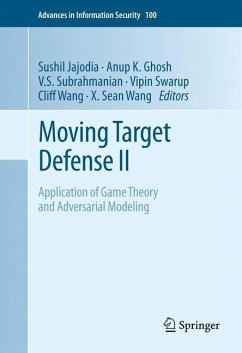Our cyber defenses are static and are governed by lengthy processes, e.g., for testing and security patch deployment. Adversaries could plan their attacks carefully over time and launch attacks at cyber speeds at any given moment. We need a new class of defensive strategies that would force adversaries to continually engage in reconnaissance and re-planning of their cyber operations. One such strategy is to present adversaries with a moving target where the attack surface of a system keeps changing.
Moving Target Defense II: Application of Game Theory and Adversarial Modeling includes contributions from world experts in the cyber security field. In the first volume of MTD, we presented MTD approaches based on software transformations, and MTD approaches based on network and software stack configurations. In this second volume of MTD, a group of leading researchers describe game theoretic, cyber maneuver, and software transformation approaches for constructing and analyzing MTD systems.
Designed as a professional book for practitioners and researchers working in the cyber security field, advanced -level students and researchers focused on computer science will also find this book valuable as a secondary text book or reference.
Moving Target Defense II: Application of Game Theory and Adversarial Modeling includes contributions from world experts in the cyber security field. In the first volume of MTD, we presented MTD approaches based on software transformations, and MTD approaches based on network and software stack configurations. In this second volume of MTD, a group of leading researchers describe game theoretic, cyber maneuver, and software transformation approaches for constructing and analyzing MTD systems.
Designed as a professional book for practitioners and researchers working in the cyber security field, advanced -level students and researchers focused on computer science will also find this book valuable as a secondary text book or reference.








